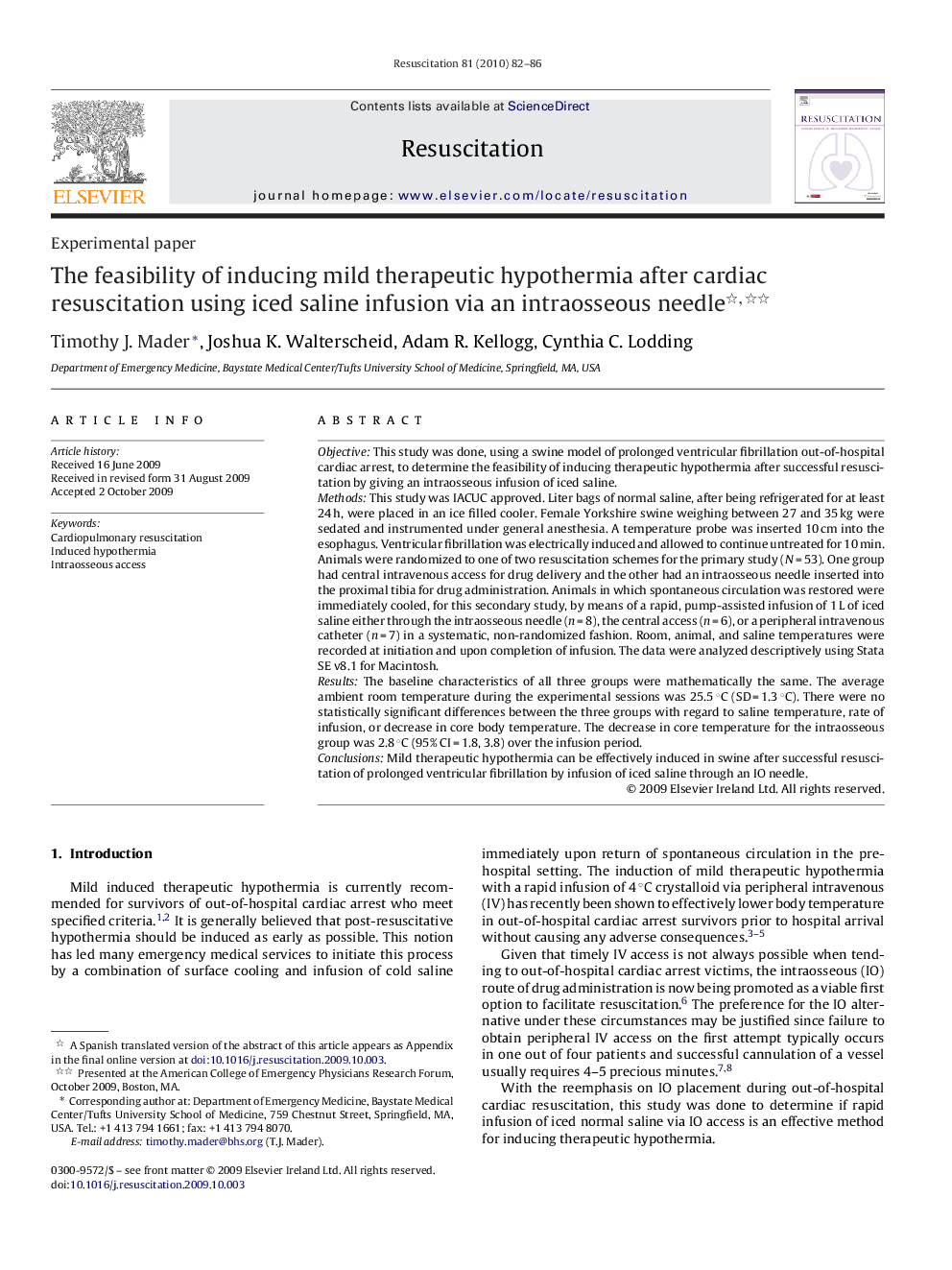| کد مقاله | کد نشریه | سال انتشار | مقاله انگلیسی | نسخه تمام متن |
|---|---|---|---|---|
| 3010669 | 1181526 | 2010 | 5 صفحه PDF | دانلود رایگان |

ObjectiveThis study was done, using a swine model of prolonged ventricular fibrillation out-of-hospital cardiac arrest, to determine the feasibility of inducing therapeutic hypothermia after successful resuscitation by giving an intraosseous infusion of iced saline.MethodsThis study was IACUC approved. Liter bags of normal saline, after being refrigerated for at least 24 h, were placed in an ice filled cooler. Female Yorkshire swine weighing between 27 and 35 kg were sedated and instrumented under general anesthesia. A temperature probe was inserted 10 cm into the esophagus. Ventricular fibrillation was electrically induced and allowed to continue untreated for 10 min. Animals were randomized to one of two resuscitation schemes for the primary study (N = 53). One group had central intravenous access for drug delivery and the other had an intraosseous needle inserted into the proximal tibia for drug administration. Animals in which spontaneous circulation was restored were immediately cooled, for this secondary study, by means of a rapid, pump-assisted infusion of 1 L of iced saline either through the intraosseous needle (n = 8), the central access (n = 6), or a peripheral intravenous catheter (n = 7) in a systematic, non-randomized fashion. Room, animal, and saline temperatures were recorded at initiation and upon completion of infusion. The data were analyzed descriptively using Stata SE v8.1 for Macintosh.ResultsThe baseline characteristics of all three groups were mathematically the same. The average ambient room temperature during the experimental sessions was 25.5 °C (SD = 1.3 °C). There were no statistically significant differences between the three groups with regard to saline temperature, rate of infusion, or decrease in core body temperature. The decrease in core temperature for the intraosseous group was 2.8 °C (95% CI = 1.8, 3.8) over the infusion period.ConclusionsMild therapeutic hypothermia can be effectively induced in swine after successful resuscitation of prolonged ventricular fibrillation by infusion of iced saline through an IO needle.
Journal: Resuscitation - Volume 81, Issue 1, January 2010, Pages 82–86